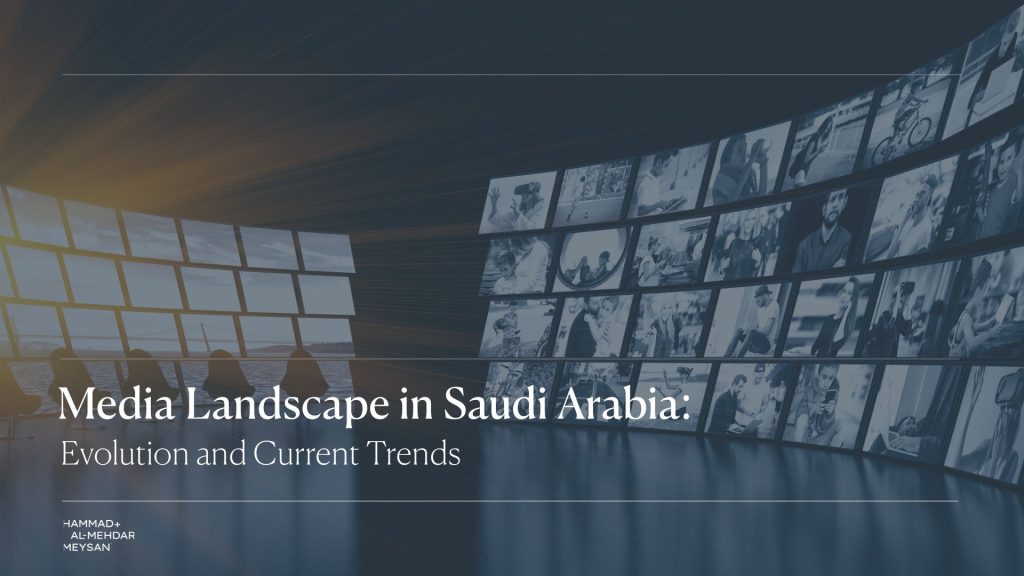
Over the past two decades, Saudi Arabia’s media landscape has undergone a remarkable transformation, shaped by sweeping social reforms, rapid technological advancements, and evolving consumer expectations. Once characterized by tightly controlled state media and limited access to international content, the Kingdom now boasts one of the most dynamic, innovative, and fast-evolving media ecosystems in the Middle East. Today, Saudi Arabia is not only consuming digital and broadcast media at unprecedented levels but is also increasingly producing and exporting content that reflects its cultural heritage and growing global ambitions.
Historical Overview: From State Control to Diversification
Historically, Saudi Arabia’s media was dominated by state-owned outlets, with print publications such as Okaz, Al Riyadh, and Asharq Al-Awsat playing central roles in public discourse under heavy cultural and religious oversight. Broadcast media was limited in diversity, and content strictly adhered to societal norms with little space for dissent or entertainment outside accepted frameworks.
The arrival of satellite television in the 1990s dramatically expanded viewers’ access to regional and global programming via pan-Arab channels like MBC and Al Jazeera, broadening perspectives while prompting tighter regulatory oversight to manage social sensitivities.
Digital Revolution and Social Media Boom
The real game-changer arrived with the digital revolution and smartphone proliferation in the 2000s and 2010s. By 2025, internet penetration in Saudi Arabia has surpassed 99%, with mobile internet being the primary access point for most users. Social media platforms such as Twitter, Snapchat, TikTok, YouTube, Instagram, and the rapidly growing Saudi-based platform Clubhouse dominate information sharing, entertainment, and public engagement.
Saudi Arabia ranks among the highest globally in social media usage per capita. Influencers, digital creators, and citizen journalists wield significant influence, often rivalling traditional media outlets in reach and impact. Social media is also a key tool for brands, government entities, and civil society to communicate directly with the public, promoting transparency and participation in line with Vision 2030’s objectives.
Expansion of Local Content Production and Global Reach
A striking recent trend is the rapid growth of local content production across film, television, music, and digital media. The Saudi Film Commission, Red Sea International Film Festival, and newly established media incubators have energized the creative sector, fostered local talent and encouraged authentic storytelling.
Streaming platforms like Shahid VIP, Netflix, and internationally expanding players such as Amazon Prime Video have significantly increased investment in Saudi original productions, boosting global exposure of Saudi culture and narratives. These efforts are redefining the Kingdom’s image on the world stage, presenting nuanced portrayals that blend tradition with modernity.
Traditional Media: Evolution and Integration
While digital media dominates, traditional outlets remain relevant, particularly television, which continues to command high viewership during key seasons like Ramadan. However, print media has largely transitioned to digital-first models to address declining physical circulation.
Leading media organizations have embraced multimedia journalism, incorporating video, podcasts, interactive storytelling, and AI-driven content personalization. Data analytics tools enable more targeted advertising and refined audience engagement strategies, helping traditional media evolve alongside digital disruption.
Regulation, Policy, and Challenges
Saudi Arabia’s media liberalization has been balanced with a recalibrated regulatory framework overseen by the General Commission for Audiovisual Media (GCAM) and the Ministry of Media. These bodies manage licensing, content standards, and industry compliance, promoting growth while safeguarding cultural values and social stability.
Freedom in entertainment and lifestyle content has expanded, but political commentary and criticism of the monarchy remain tightly regulated. Simultaneously, the government is proactive in combating misinformation and ensuring cybersecurity through legal measures, anti-fake news campaigns, and digital literacy programs aimed at fostering responsible media consumption.
The Road Ahead: Innovation and Ambition
Looking forward, Saudi Arabia’s media industry is positioned for sustained growth and innovation. Projects like NEOM Media City and investments in emerging technologies augmented reality, virtual production, artificial intelligence, and metaverse applications highlight the Kingdom’s ambition to lead in next-generation media experiences.
Supported by a youthful, tech-savvy population and robust government backing, Saudi Arabia is emerging as a regional media hub and an international player in creative industries. The evolving media landscape offers vast opportunities for local creators and international partners alike, reflecting a society balancing rich traditions with a forward-looking global outlook.
The transformation of Saudi Arabia’s media scene is not just about technology or market growth—it is a lens into the Kingdom’s profound social and cultural evolution, illustrating its journey toward modernization and global integration.
